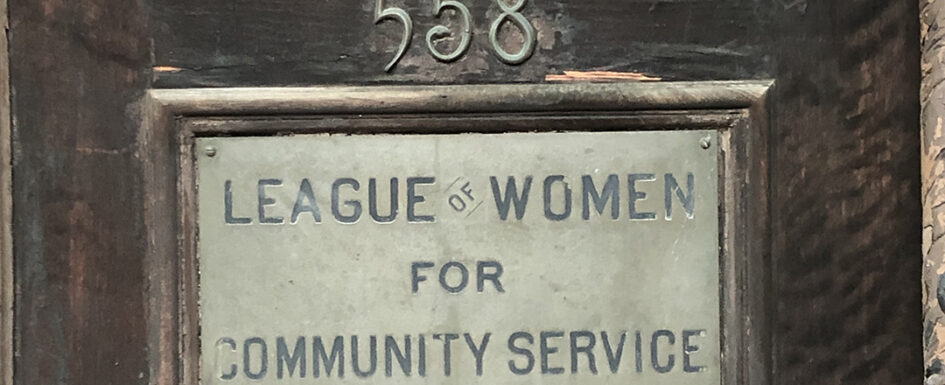
Quick quiz:
- Where did Coretta Scott stay while a student at New England Conservatory?
- Where did Marian Anderson and Roland Hayes sing and Malcolm X speak?
- Where were early meetings of the South End Historical Society held?
All of that happened at the League of Women for Community Service, 558 Massachusetts Avenue in Chester Square, South End.
An upper-class Black women’s social service agency, known as 558, the League grew out of a Soldiers’ Comfort Unit organized in 1918 under the leadership of Maria L. Baldwin, headmistress of the Agassiz School in Cambridge, assisted by a women’s bridge club. It provided much-needed services to Black soldiers stationed in and near Boston. Deciding against disbanding after the war, the group, with the help of prominent Black lawyer William H. Lewis, purchased 39 Chester Square (558 Mass. Ave.) in 1920. At the time, the building was owned by Nathaniel Farwell, a sea captain and shipping merchant, who had bought 558 after the Civil War. His widow continued to live at the Farwell Mansion until after 1900.
In the mid-1800s, 558 was built and owned by William R. Carnes, a cabinet maker and mahogany dealer. It was Carnes who built the twin house at 560 Mass. Ave., and it must have been Carnes who sculpted the setter on the entrance newel post. The League claims that a relative of Carnes once told them the house, prior to the Civil War, was a stop on the Underground Railroad.
The building has a ballroom on the first floor with a large dining room in the back, the perfect setting for performances and meetings. Upstairs is the library left by founder Maria Baldwin who served as President of the League until her death in 1922
In The Other Brahmins: Boston’s Black Upper-Class 1750-1950, sociologist and professor emeritus, Adelaide Cromwell (past director of the African Studies Center at Boston University which she co-founded in 1959) wrote that membership of both the League and the Women’s Service Club at 464 Mass. Ave. was upper-class.
“As a result, perhaps of early orientation, the impression exists that the Women’s Service Club stresses social prestige among its governing board, while the League of Women for Community Service emphasizes old Boston residence and educational qualification, with a few exceptions in either case.” Cromwell comments that West Indians and “unheralded newcomers” had difficulty gaining positions on the governing boards of either group.
In the Forties and Fifties, when young Black women up from the South like Coretta Scott were discriminated against in housing, 558 was one of the local organizations that welcomed them.
In 1953 after the South End Planning Council held its annual Civic Pride Day, everyone was invited to the League of Women for Community Service for a reception with Mayor John Hynes.
Throughout the Fifties and Sixties, 558 was a key place for South End events. In recent years, 558 has fallen into disrepair but is now undergoing restoration and has reinvigorated its bound among Black socialites.
The LWCS has launched a new website that can be found here.
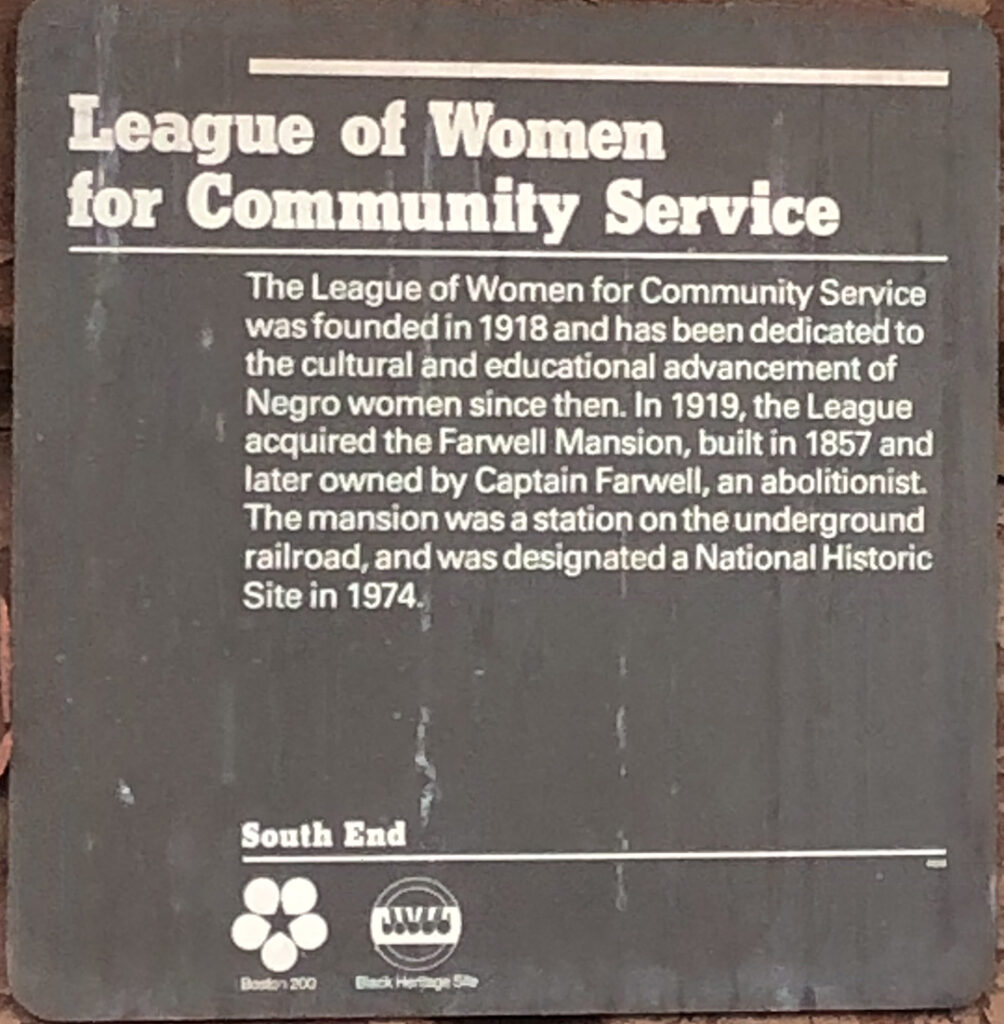
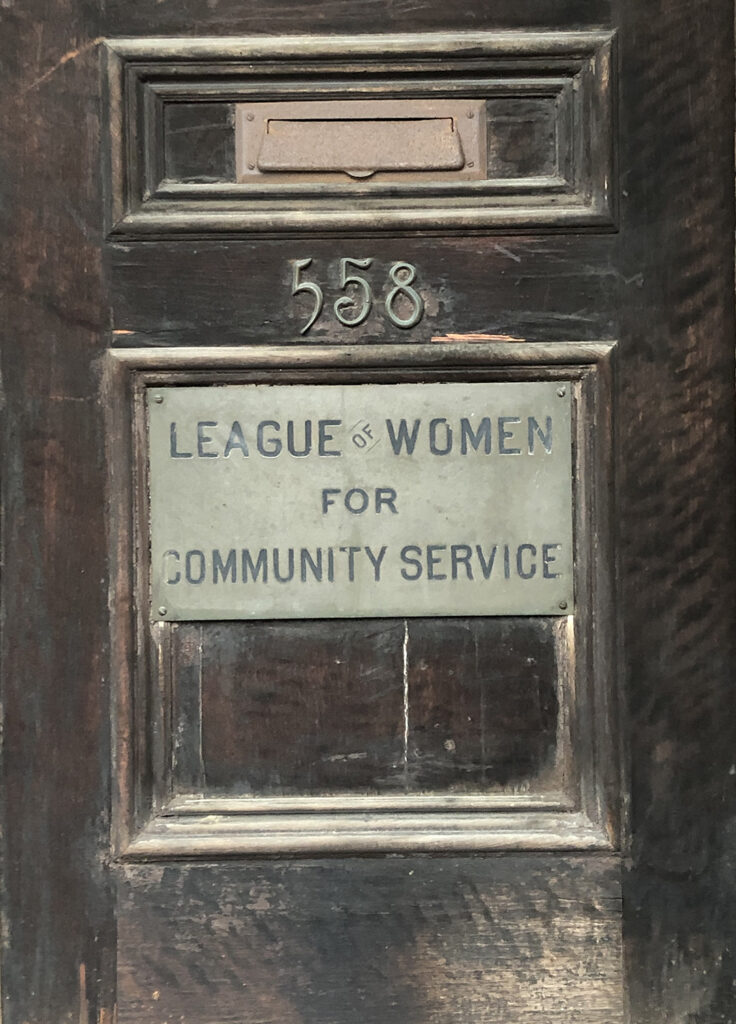
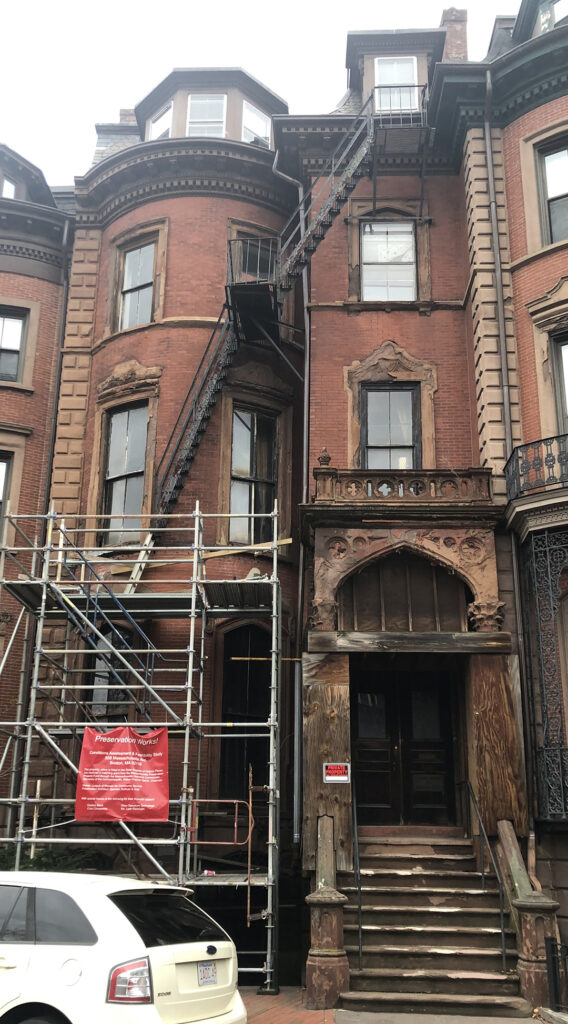
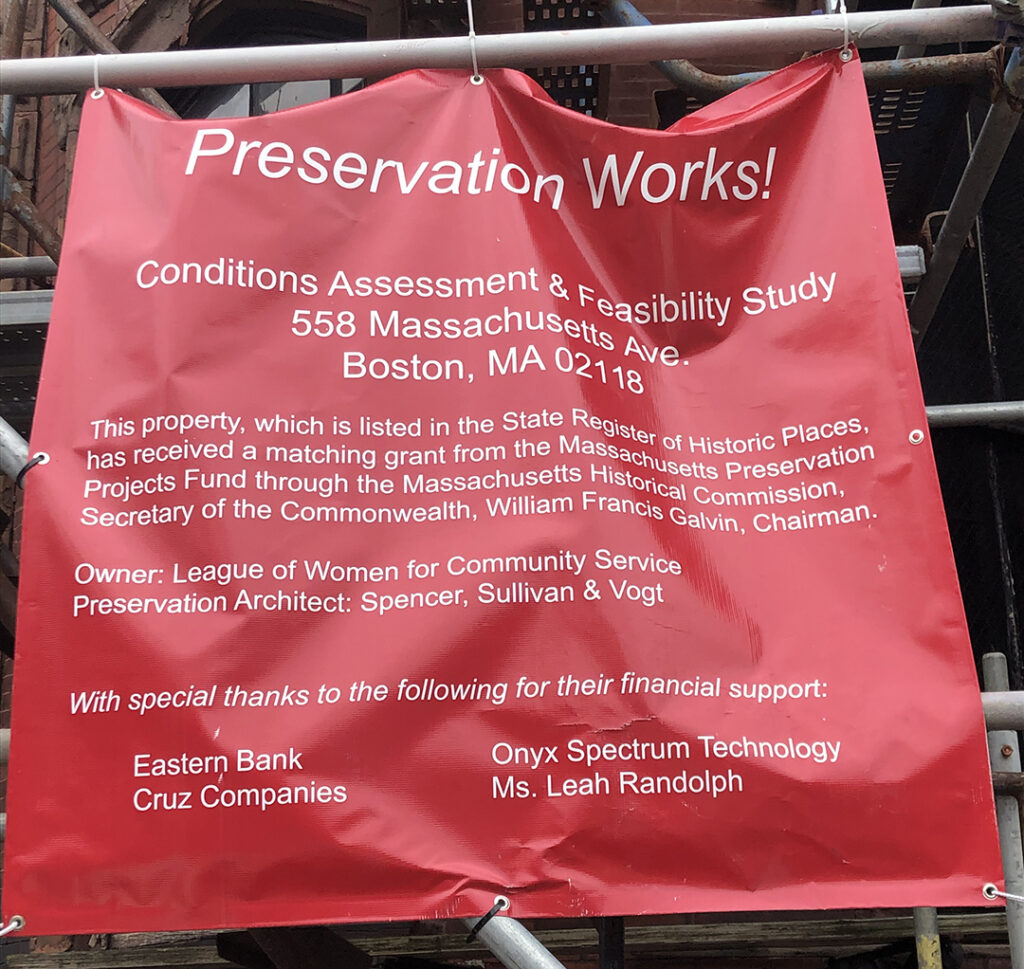
I FIND THAT WHOLE AREA FASCINATING, MY DAD LIVED ON MASS AVE AT THAT TIME, I PASS BOTH LOCATIONS EVERYDAY, I AM A BOSTONIAN, BORN IN MISSION HILL, LOVE TO HELP IN ANYWAY, PEACE
Thank you. Please tell your friends about this website, follow us on Facebook – https://www.facebook.com/rcht.org and Instagram – https://www.instagram.com/roxburycrossing/